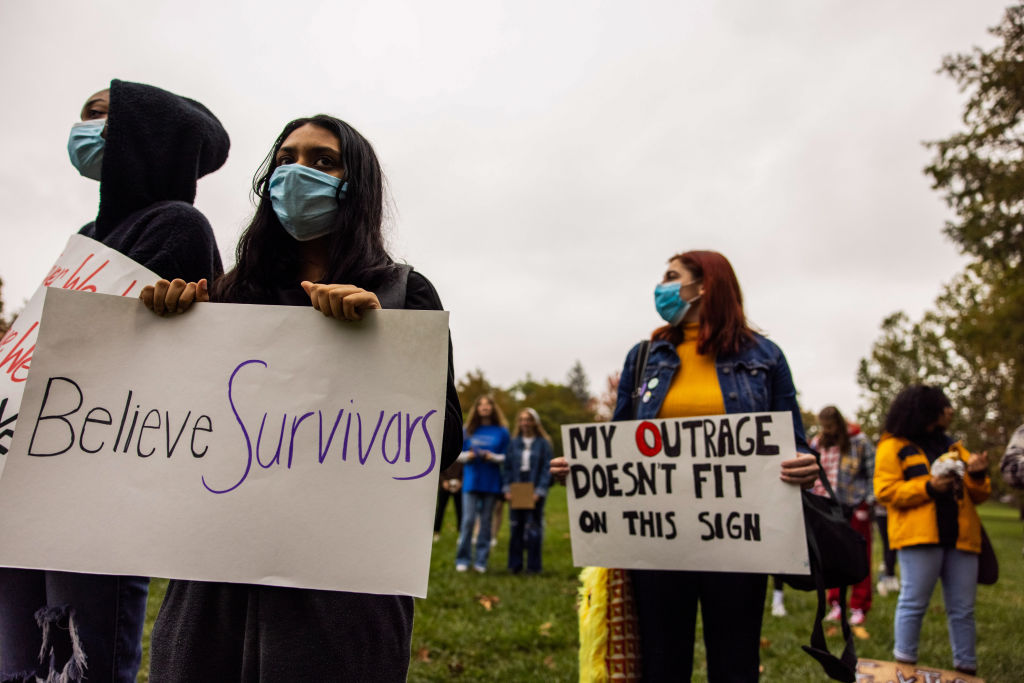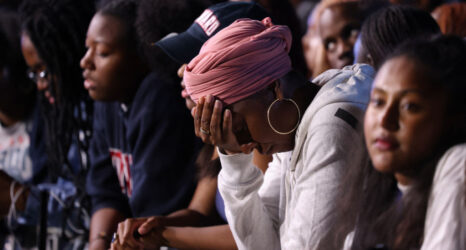Survivors need focused funders, media attention and policy support that prioritize their healing and liberation.

In the crowded landscape of gender justice, survivors of gender-based violence (GBV) are often neglected. While gender issues like abortion rights, pay equity and childcare frequently dominate discussions, survivor justice—particularly for those impacted by GBV—struggles for recognition. Survivors are lost in the larger conversation, making it difficult for people deeply committed to gender justice to see how creating a separate space for survivor justice fits into their advocacy.
Survivor justice is not just another issue under the broader gender justice canopy, but a critical and distinct movement that requires its own focus, attention and support. This may feel, to some, like they’re being asked to prioritize one issue over another. Yet, the epidemic proportions of GBV demand a new approach: creating a survivor justice movement, an independent space that focuses on the healing, support and visibility of survivors.
The current discourse often focuses solely on women’s experiences. This inadvertently alienates survivors from other genders, ignoring their trauma and the support they need for healing.
In a time when gender justice gained visibility globally—whether through Kamala Harris’ historic candidacy, the battle for abortion rights or the fight to close income gaps—GBV remains a persistent yet sidelined issue. Despite widespread incidents of violence, such as the tragic murders of women in India, Uganda and the United States, GBV struggles to gain sufficient visibility within the gender justice space. Yet the issue remains overlooked, despite its widespread occurrence.
- GBV affects an estimated 736 million women globally, according to the U.N., with one in three women experiencing physical or sexual violence.
- The increase in domestic violence during COVID-19 only further highlighted this crisis. In 2021, 45 percent of women reported experiencing violence or knowing someone who had.
GBV, as it stands today, affects individuals across all gender identities, including cisgender men, trans men and women, and nonbinary individuals. Yet, the current discourse often focuses solely on women’s experiences. This inadvertently alienates survivors from other genders, ignoring their trauma and the support they need for healing.
To create real change, survivor justice must exist as a separate movement, not just an addendum to women’s rights. Survivors of violence require a distinct platform where their voices can be heard, their trauma can be acknowledged and they can access healing. The feminist ideals that birthed the women’s rights movement remain crucial, but they must be expanded to include all survivors of GBV because ultimately, a survivor is a survivor is a survivor.
Trans individuals, in particular, face alarming levels of violence, with some studies suggesting that up to 66 percent experience sexual violence in their lifetimes. Cis men, too, are often forgotten victims, with boys experiencing child sexual abuse at rates comparable to or even higher than girls, as seen in studies from countries like India.
To create real change, survivor justice must exist as a separate movement, not just an addendum to women’s rights.
The trauma of violence has a profound impact on mental and physical health. Survivors often endure chronic PTSD, anxiety, depression and long-term physical injuries. Without targeted attention, many survivors struggle to find the support they need.
Creating a survivor justice movement requires more than just a name—it requires building a distinct ecosystem where survivors are not subsumed under the larger gender justice umbrella. Survivors need focused funders, media attention and policy support that prioritize their healing and liberation.
This movement will not be easy to build. Breaking from the established gender justice framework is challenging, especially when it involves untangling survivor justice from the broader gender issues that many are committed to. But if doing so creates a more effective pathway to addressing GBV and supporting survivors, then it is a step worth taking.
The vision here is clear: survivor justice cannot continue to be sidelined. It must become a distinct and vital movement, one that acknowledges the unique needs of survivors and provides them the space to heal and thrive.
Read more:





